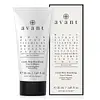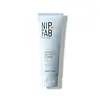What's inside
What's inside
 Key Ingredients
Key Ingredients

 Benefits
Benefits

 Concerns
Concerns

 Ingredients Side-by-side
Ingredients Side-by-side

Water
Skin ConditioningGlycerin
HumectantCellulose Acetate
Cocamidopropyl Betaine
CleansingPEG-7 Glyceryl Cocoate
EmulsifyingAcrylates Copolymer
Sodium Trideceth Sulfate
CleansingSodium Methyl Cocoyl Taurate
CleansingGlycol Distearate
EmollientSodium Benzoate
MaskingGlycolic Acid
BufferingTriethanolamine
BufferingParfum
MaskingSodium Lauroyl Glutamate
Sodium Lauroamphoacetate
CleansingCocamide Mea
EmulsifyingSteareth-4
EmulsifyingPEG/PPG-14/4 Dimethicone
EmulsifyingPotassium Sorbate
PreservativeRosa Hybrid Flower Extract
Skin ConditioningSodium Chloride
MaskingMaltodextrin
AbsorbentCitric Acid
BufferingCalcium Pantothenate
Citronellol
PerfumingXanthan Gum
EmulsifyingSodium Glycolate
BufferingLinalool
PerfumingCaprylyl Glycol
EmollientUrea
BufferingMagnesium Lactate
BufferingPapain
Skin ConditioningEthylhexylglycerin
Skin ConditioningPotassium Lactate
BufferingMagnesium Chloride
Proline
Skin ConditioningSerine
MaskingAlanine
MaskingSodium Citrate
BufferingWater, Glycerin, Cellulose Acetate, Cocamidopropyl Betaine, PEG-7 Glyceryl Cocoate, Acrylates Copolymer, Sodium Trideceth Sulfate, Sodium Methyl Cocoyl Taurate, Glycol Distearate, Sodium Benzoate, Glycolic Acid, Triethanolamine, Parfum, Sodium Lauroyl Glutamate, Sodium Lauroamphoacetate, Cocamide Mea, Steareth-4, PEG/PPG-14/4 Dimethicone, Potassium Sorbate, Rosa Hybrid Flower Extract, Sodium Chloride, Maltodextrin, Citric Acid, Calcium Pantothenate, Citronellol, Xanthan Gum, Sodium Glycolate, Linalool, Caprylyl Glycol, Urea, Magnesium Lactate, Papain, Ethylhexylglycerin, Potassium Lactate, Magnesium Chloride, Proline, Serine, Alanine, Sodium Citrate
Water
Skin ConditioningHydrated Silica
AbrasiveCetearyl Alcohol
EmollientCaprylic/Capric Triglyceride
MaskingTriethanolamine
BufferingGlycolic Acid
BufferingGlycerin
HumectantGlyceryl Stearate
EmollientPEG-100 Stearate
Butyrospermum Parkii Butter
Skin ConditioningPrunus Amygdalus Dulcis Oil
Skin ConditioningPhenoxyethanol
PreservativeParfum
MaskingXanthan Gum
EmulsifyingDisodium EDTA
Salicylic Acid
MaskingAloe Barbadensis Leaf Juice
Skin ConditioningDehydroacetic Acid
PreservativeTocopheryl Acetate
AntioxidantCitric Acid
BufferingPotassium Sorbate
PreservativeSodium Benzoate
MaskingSodium Sulfite
PreservativeBenzyl Alcohol
PerfumingLimonene
PerfumingBenzyl Benzoate
AntimicrobialGeraniol
PerfumingButylphenyl Methylpropional
PerfumingCI 42090
Cosmetic ColorantWater, Hydrated Silica, Cetearyl Alcohol, Caprylic/Capric Triglyceride, Triethanolamine, Glycolic Acid, Glycerin, Glyceryl Stearate, PEG-100 Stearate, Butyrospermum Parkii Butter, Prunus Amygdalus Dulcis Oil, Phenoxyethanol, Parfum, Xanthan Gum, Disodium EDTA, Salicylic Acid, Aloe Barbadensis Leaf Juice, Dehydroacetic Acid, Tocopheryl Acetate, Citric Acid, Potassium Sorbate, Sodium Benzoate, Sodium Sulfite, Benzyl Alcohol, Limonene, Benzyl Benzoate, Geraniol, Butylphenyl Methylpropional, CI 42090
Ingredients Explained
These ingredients are found in both products.
Ingredients higher up in an ingredient list are typically present in a larger amount.
Citric Acid is an alpha hydroxy acid (AHA) naturally found in citrus fruits like oranges, lemons, and limes.
Like other AHAs, citric acid can exfoliate skin by breaking down the bonds that hold dead skin cells together. This helps reveal smoother and brighter skin underneath.
However, this exfoliating effect only happens at high concentrations (20%) which can be hard to find in cosmetic products.
Due to this, citric acid is usually included in small amounts as a pH adjuster. This helps keep products slightly more acidic and compatible with skin's natural pH.
In skincare formulas, citric acid can:
While it can provide some skin benefits, research shows lactic acid and glycolic acid are generally more effective and less irritating exfoliants.
Most citric acid used in skincare today is made by fermenting sugars (usually from molasses). This synthetic version is identical to the natural citrus form but easier to stabilize and use in formulations.
Read more about some other popular AHA's here:
Learn more about Citric AcidGlycerin is already naturally found in your skin. It helps moisturize and protect your skin.
A study from 2016 found glycerin to be more effective as a humectant than AHAs and hyaluronic acid.
As a humectant, it helps the skin stay hydrated by pulling moisture to your skin. The low molecular weight of glycerin allows it to pull moisture into the deeper layers of your skin.
Hydrated skin improves your skin barrier; Your skin barrier helps protect against irritants and bacteria.
Glycerin has also been found to have antimicrobial and antiviral properties. Due to these properties, glycerin is often used in wound and burn treatments.
In cosmetics, glycerin is usually derived from plants such as soybean or palm. However, it can also be sourced from animals, such as tallow or animal fat.
This ingredient is organic, colorless, odorless, and non-toxic.
Glycerin is the name for this ingredient in American English. British English uses Glycerol/Glycerine.
Learn more about GlycerinGlycolic Acid is arguably the most famous alpha hydroxy acid (AHA) with tons of research backing its benefits.
It is found naturally in sugar cane but the form used in skincare is usually synthetic for purity and stability.
Glycolic acid removes the top layer of dead skin cells to allow newer and fresher ones to emerge.
AHAs work by breaking down the structural “glue” that holds old skin cells in place. When that buildup is gone, your skin can renew itself more efficiently.
Research also shows glycolic acid stimulates collagen production, helping to firm and thicken the skin over time. This is one of its biggest advantages over other AHAs.
Overall, glycolic acid helps with:
Fun fact: Glycolic acid boosts skin hydration by helping it produce molecules that increase hyaluronic acid naturally.
To work best, glycolic acid products should have a pH between 3-4 (that’s where exfoliation is most effective but still gentle on skin).
The pH and concentration of a product are key to its effectiveness:
It is normal to feel a slight stinging sensation when using glycolic acid. This usually fades as your skin adjusts.
Because glycolic acid has the smallest molecular size in the AHA family, it can penetrate deeper, which enhances its effectiveness but also makes it more likely to irritate sensitive skin.
If your skin is very sensitive or prone to rosacea, glycolic acid may be too strong; in that case, try milder options like lactic acid or a PHA instead.
Recent studies suggest glycolic acid might even help protect against UV damage. But don’t skip sunscreen! Freshly exfoliated skin is more sensitive to the sun.
Glycolic acid is a skincare superstar. It smooths, brightens, hydrates, and firms the skin. Unless you’re highly sensitive, it’s well worth adding to your routine.
Read more about some other popular AHA's here:
Learn more about Glycolic AcidParfum is a catch-all term for an ingredient or more that is used to give a scent to products.
Also called "fragrance", this ingredient can be a blend of hundreds of chemicals or plant oils. This means every product with "fragrance" or "parfum" in the ingredients list is a different mixture.
For instance, Habanolide is a proprietary trade name for a specific aroma chemical. When used as a fragrance ingredient in cosmetics, most aroma chemicals fall under the broad labeling category of “FRAGRANCE” or “PARFUM” according to EU and US regulations.
The term 'parfum' or 'fragrance' is not regulated in many countries. In many cases, it is up to the brand to define this term.
For instance, many brands choose to label themselves as "fragrance-free" because they are not using synthetic fragrances. However, their products may still contain ingredients such as essential oils that are considered a fragrance by INCI standards.
One example is Calendula flower extract. Calendula is an essential oil that still imparts a scent or 'fragrance'.
Depending on the blend, the ingredients in the mixture can cause allergies and sensitivities on the skin. Some ingredients that are known EU allergens include linalool and citronellol.
Parfum can also be used to mask or cover an unpleasant scent.
The bottom line is: not all fragrances/parfum/ingredients are created equally. If you are worried about fragrances, we recommend taking a closer look at an ingredient. And of course, we always recommend speaking with a professional.
Learn more about ParfumPotassium Sorbate is a preservative used to prevent yeast and mold in products. It is commonly found in both cosmetic and food products.
This ingredient comes from potassium salt derived from sorbic acid. Sorbic acid is a natural antibiotic and effective against fungus.
Both potassium sorbate and sorbic acid can be found in baked goods, cheeses, dried meats, dried fruit, ice cream, pickles, wine, yogurt, and more.
You'll often find this ingredient used with other preservatives.
Learn more about Potassium SorbateSodium Benzoate is a preservative. It's used in both cosmetic and food products to inhibit the growth of mold and bacteria. It is typically produced synthetically.
Both the US FDA and EU Health Committee have approved the use of sodium benzoate. In the US, levels of 0.1% (of the total product) are allowed.
Sodium benzoate works as a preservative by inhibiting the growth of bacteria inside of cells. It prevents the cell from fermenting a type of sugar using an enzyme called phosphofructokinase.
It is the salt of benzoic acid. Foods containing sodium benzoate include soda, salad dressings, condiments, fruit juices, wines, and snack foods.
Studies for using ascorbic acid and sodium benzoate in cosmetics are lacking, especially in skincare routines with multiple steps.
We always recommend speaking with a professional, such as a dermatologist, if you have any concerns.
Learn more about Sodium BenzoateTriethanolamine is an emulsifier and pH adjuster. It is created using ethylene oxide and ammonia. This gives Triethanolamine a nitrogen core and a similar scent to ammonia.
As an emulsifier, it prevents ingredients from separating and enhances texture by adding volume to a product.
PH adjusters are common in cosmetic products. The pH of a product can affect the effectiveness of other ingredients. A product with a high pH may also irritate the skin.
Learn more about TriethanolamineWater. It's the most common cosmetic ingredient of all. You'll usually see it at the top of ingredient lists, meaning that it makes up the largest part of the product.
So why is it so popular? Water most often acts as a solvent - this means that it helps dissolve other ingredients into the formulation.
You'll also recognize water as that liquid we all need to stay alive. If you see this, drink a glass of water. Stay hydrated!
Learn more about WaterXanthan gum is used as a stabilizer and thickener within cosmetic products. It helps give products a sticky, thick feeling - preventing them from being too runny.
On the technical side of things, xanthan gum is a polysaccharide - a combination consisting of multiple sugar molecules bonded together.
Xanthan gum is a pretty common and great ingredient. It is a natural, non-toxic, non-irritating ingredient that is also commonly used in food products.
Learn more about Xanthan Gum